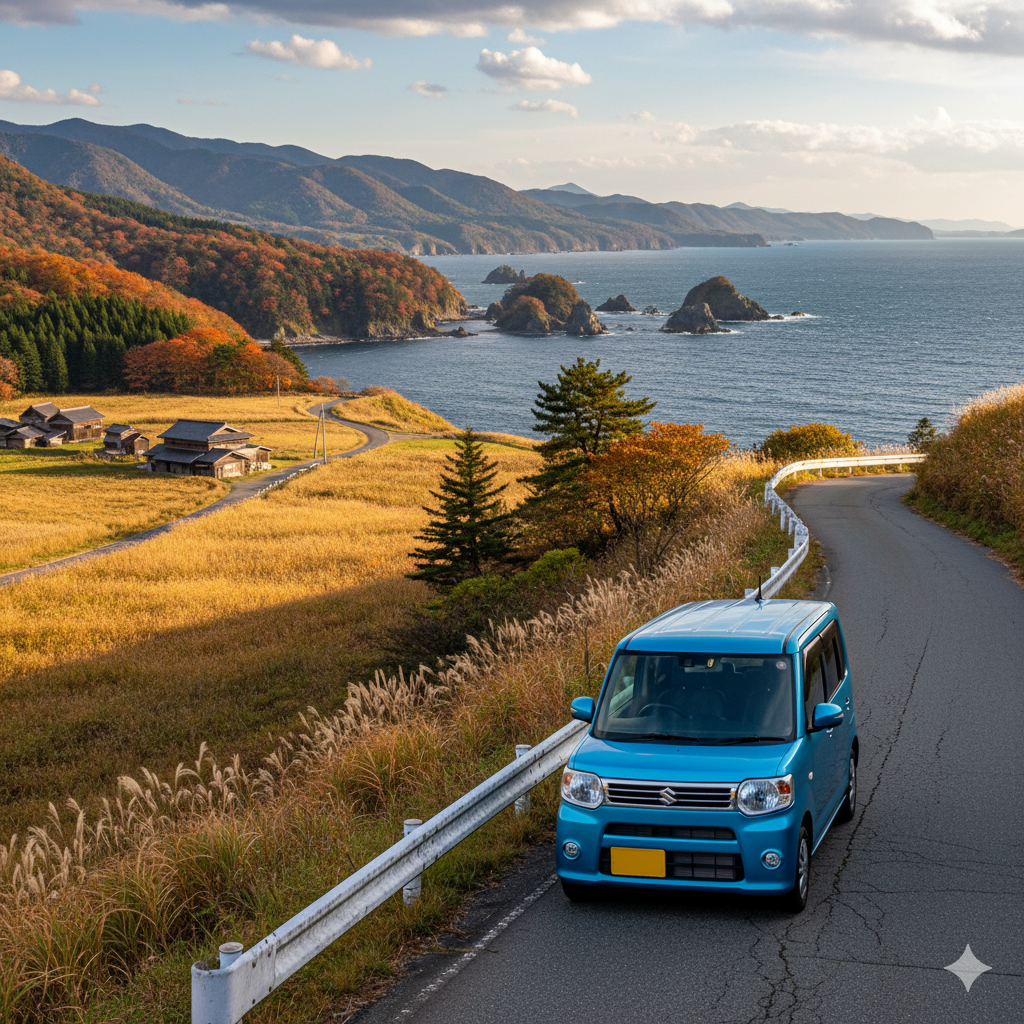If you’re in your 40s, 50s, or 60s and planning a move to Japan, one of the most practical questions you may face is: Will I need to drive?
Japan is famous for its excellent public transportation. In cities like Tokyo or Osaka, owning a car can feel unnecessary—or even like a burden. But once you head into regional towns or the countryside, driving becomes a very different conversation.
This guide explains what it’s like driving in Japan over 40: the rules, costs, car options, alternatives, and lifestyle factors. I’ll also share some local insights from Niigata and Sado Island, where public transport isn’t as frequent as in Tokyo—but creative solutions (like community buses and car-sharing) make life easier.
👉 If you’re still deciding whether you need a car at all, you might also like my related post: Do Foreigners Need a Car in Japan?
Do Expats Over 40 Really Need to Drive in Japan?
The answer depends largely on where you live:
- Cities (Tokyo, Osaka, Yokohama): No car needed. Public transport is world-class, and parking can cost ¥30,000 a month or more.
- Regional cities (Niigata, Kanazawa): Manageable without a car if you live near shops and clinics. Many retirees eventually get one for convenience.
- Countryside (Sado Island, Akita, rural Shikoku): A car is often essential. Buses may only run a few times a day, and taxis can get expensive.
Licensing Basics for Foreign Drivers
First Year: International Driving Permit (IDP)
- Japan only accepts IDPs issued under the 1949 Geneva Convention.
- Valid for up to 12 months from your entry date.
- You must also carry your original home-country license.
Switching to a Japanese License
- Some countries (UK, Germany, France) → simple exchange.
- Others (like the U.S.) → require a written test and a short practical exam.
- If your license isn’t in Japanese, you’ll need a translation from JAF (Japan Automobile Federation).
Renewals
- Licenses are usually valid for 3–5 years.
- At 70+, you’ll face shorter renewal cycles, and at 75+, cognitive tests.
👉 Helpful resource: Japan Guide – Driving in Japan
Best Cars for Expats in Their 40s+
Kei Cars (軽自動車) – Ideal for Retirees
- Cheaper shaken (inspection) and insurance.
- Lower taxes (~¥10,800/year).
- Fuel efficient (~20km/L).
- Compact size = easier to park.

Recommended Models
- Honda N-Box → high seating, roomy interior.
- Suzuki Spacia → reliable and efficient.
- Daihatsu Tanto → popular for rural and urban driving.
Safety Features to Look For
- Automatic braking
- Lane departure warning
- Parking sensors
- Wide-angle cameras
Realistic Costs of Driving in Japan
Here’s a monthly breakdown for a kei car:
| Expense | Monthly Equivalent | Notes |
|---|---|---|
| Shaken (車検) | ~¥800 | Done every 2 years; minimum cost ¥18,000–20,000 if handled yourself. At a dealer, it can reach ¥60,000–100,000. |
| Annual Road Tax | ~¥900 | Standard kei car = ¥10,800/year (older models may be ¥7,200). |
| Insurance | ¥5,000–¥7,000 | Includes compulsory (Jibaiseki) + voluntary. |
| Fuel | ¥5,000–¥10,000 | Depends on driving distance. |
| Parking | ¥10,000–¥30,000 (cities) | Usually free in countryside. |
| Maintenance | ¥3,000–¥5,000 | Oil, tires, small repairs. |
👉 Total Monthly Costs
- City driver (with parking): ¥40,000–¥60,000
- Countryside driver (free parking): ¥25,000–¥35,000
Alternatives to Owning a Car
Not everyone over 40 wants to start driving in a new country. Luckily, Japan has alternatives:
Car-Sharing
Services like Times Car Share or Orix CarShare let you rent cars by the hour. Great for occasional errands.
Community Buses
In many rural towns, cities run community buses designed for seniors.
- Fares are low (¥100–¥200), and in some places, rides are free for older residents.
- Routes usually connect neighborhoods to supermarkets, hospitals, and train stations.
- On Sado Island, for example, some retirees live comfortably without owning cars because of these buses.
Taxis & Ride-Hailing
Uber and DiDi operate in some urban areas. Taxis are safe and reliable but can be costly for daily use.
Lifestyle, Freedom, and Confidence
Driving in Japan after 40 isn’t just about mobility—it’s about lifestyle:
- In Tokyo, living car-free means less stress and fewer expenses.
- In Niigata or Sado Island, a car means freedom to explore beaches, mountains, and rice fields on your own schedule.
For many retirees, driving offers independence and social connection. But it’s equally important to know when to rely on alternatives like buses or car-sharing for safety and peace of mind.
Conclusion
Driving in Japan over 40 is a personal decision shaped by where you live, your budget, and your lifestyle. For some, a kei car offers independence at a reasonable cost. For others, community buses and car-sharing make more sense.
Either way, Japan provides options that can support retirees at every stage of life.
👉 Still not sure? Read my related post: Do Foreigners Need a Car in Japan?
If you’re planning to rent a car while exploring Japan, I recommend DiscoverCars.com – it’s a simple way to compare prices and book rentals, and I may earn a small commission at no extra cost to you.
If you’re planning to rent a car while exploring Japan, I recommend DiscoverCars.com – it’s a simple way to compare prices and book rentals, and I may earn a small commission at no extra cost to you.

